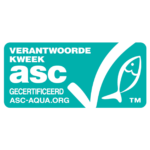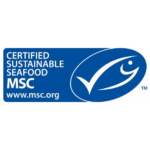Razor clam
Atlantic Ocean, northeast (FAO 27)
Mechanic dredges
- Jan
- Feb
- Mar
- Apr
- May
- Jun
- Jul
- Aug
- Sep
- Oct
- Nov
- Dec
Shellfish is a culinary term that is often used for several species of molluscs, gastropods, bivalves and arthropods. Some examples are the St. James shell, mussels, razor clams, oysters, cockles and whelks. Most shellfish live partly or fully buried into the seabed, mostly in sandy or gravelly bottoms. They feed by filtering nutrients out of the water. Seed and eggs are released into the water and fertilized externally. Most shellfish are hermaphroditic, they can be both male and female. There are many different shellfish species in the North Sea that are very much suitable for consumption. Fishing methods on shellfish include hand-picking, dredging or mechanic dredges (suckers).
The Ensis genus houses many bivalve species and is also referred to as razor clam or sword razor. Species of the Ensis genus can be found along the entire European coastline. The American jackknife clam is the most common razor clam species which can be found along the Dutch coast. This species is originally found near western Atlantic coastlines but has been introduced in the North Sea via ballast water. Razor clams are bivalves with an oblong, rectangular shell and often live buried in the sand at depths of up to 50 centimetres. Razor clam species usually occur aggregated in large numbers. They also have very well–developed swimming skills; they swim by pushing water out of their shell.
Atlantic Ocean, northeast (FAO 27)
Mechanic dredges
Atlantic Ocean, northeast (FAO 27)
Handpicked
Atlantic Ocean, northeast (FAO 27)
Mechanic dredges

Fish with the ASC label is farmed in a sustainable manner.

Fish with the MSC label is caught sustainably.
This fish is not being overfished or is being responsibly farmed, with minimal impact on the environment.
This fish is a second choice. There are still some improvements to be made in this fishery or fish farm.
Do not buy this fish. It's being overfished or the way it's farmed or caught has a negative impact on the environment.

There is fish available of this species that is farmed or caught using high welfare standards.

GlobalG.A.P. certified farms are doing a step in the right direction in terms of sustainability. A few species with this label are getting a better score on the VISwijzer.

Organic standards are the strictest when it comes to fish feed. They also require certain measures for animal well-being.